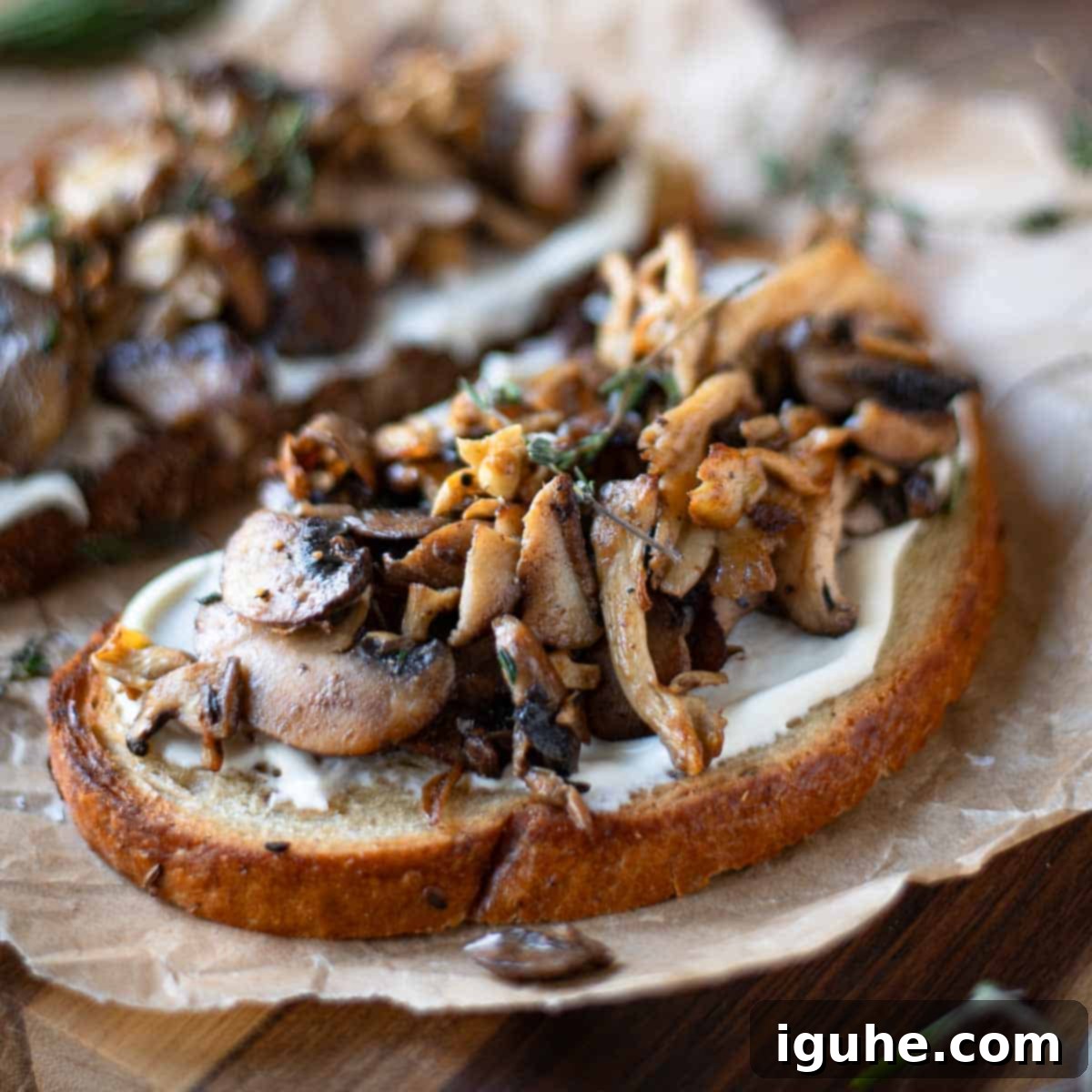Savor the Season: The Ultimate Wild Mushroom Tartine (Mushroom Toast) Recipe
Earthy, aromatic, and undeniably savory, this **Wild Mushroom Tartine**, often lovingly called gourmet mushroom toast, is a true celebration of rustic flavors. It masterfully combines the deep, umami notes of sautéed wild mushrooms with fresh thyme, a hint of zesty Dijon mustard, a splash of tangy Sherry vinegar, and the luxurious creaminess of crème fraîche, all generously piled high on perfectly toasted artisan rye bread. More than just a simple snack, this elegant tartine is a versatile dish, equally suited for an exquisite breakfast, a light and satisfying lunch, or even a sophisticated appetizer for your next gathering.
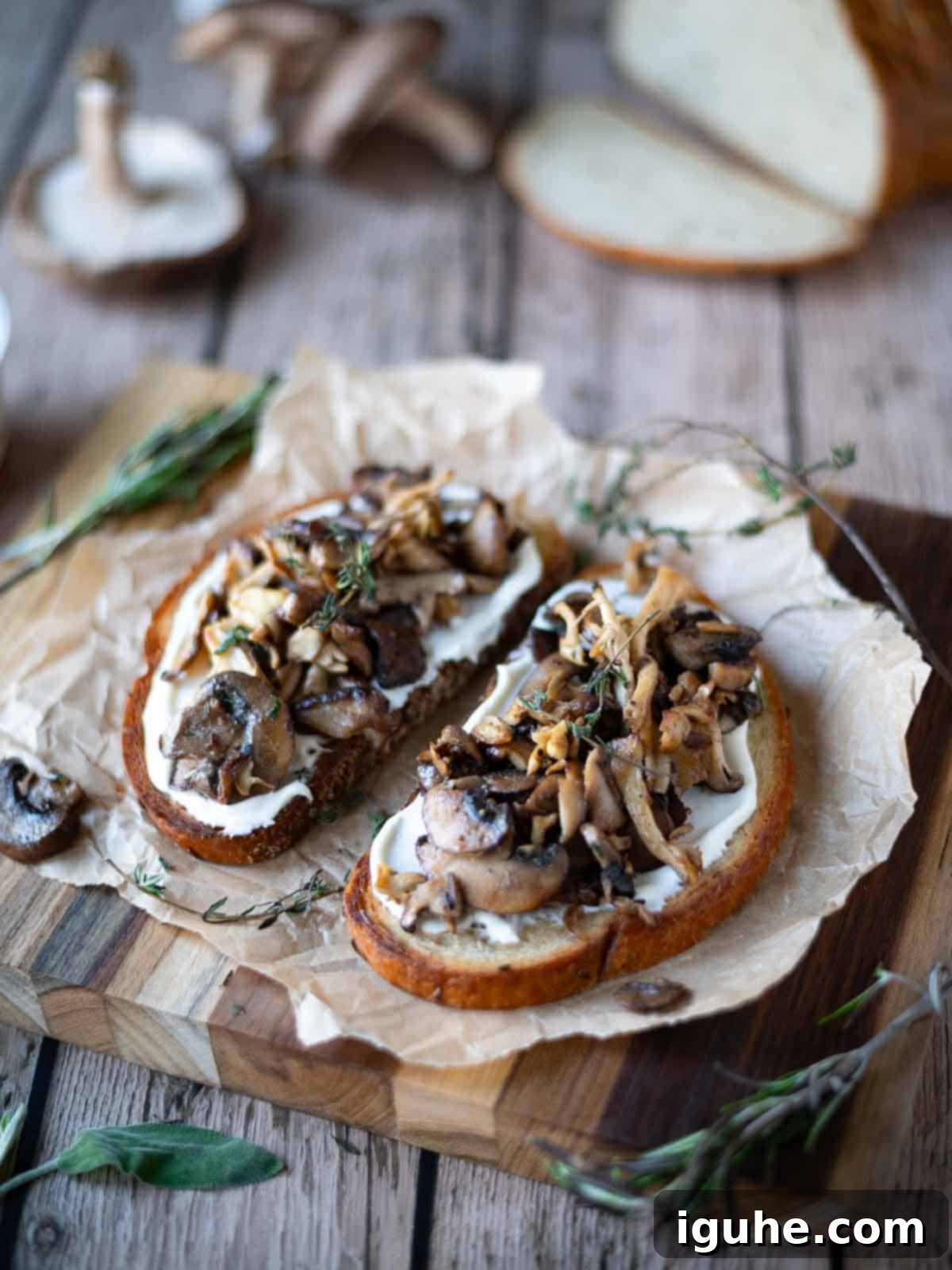
There’s something truly captivating about the rich, complex flavors of mushrooms, especially when they are wild. This recipe harnesses that inherent magic, transforming humble ingredients into a dish that feels both comforting and remarkably refined. While many might consider a “mushroom era” a fleeting phase, the allure of these umami-packed toasts (or “shroasts,” as we affectionately call them) is, in our opinion, a culinary journey worth embarking on – and certainly not a crime!
What sets this wild mushroom tartine apart from ordinary toast is the deliberate choice of its two starring components: authentic wild mushrooms and robust rye bread. The distinctive earthy tang of rye, with its subtle caraway notes, creates an unparalleled foundation that harmonizes perfectly with the intense, forest-like essence of wild mushrooms. This combination elevates the dish to something truly “specTOASTular” – a word we stand by, despite its informal nature, because the flavor fusion is simply that good. Get ready to impress your palate and your guests with this easy-to-make yet incredibly flavorful open-faced sandwich.
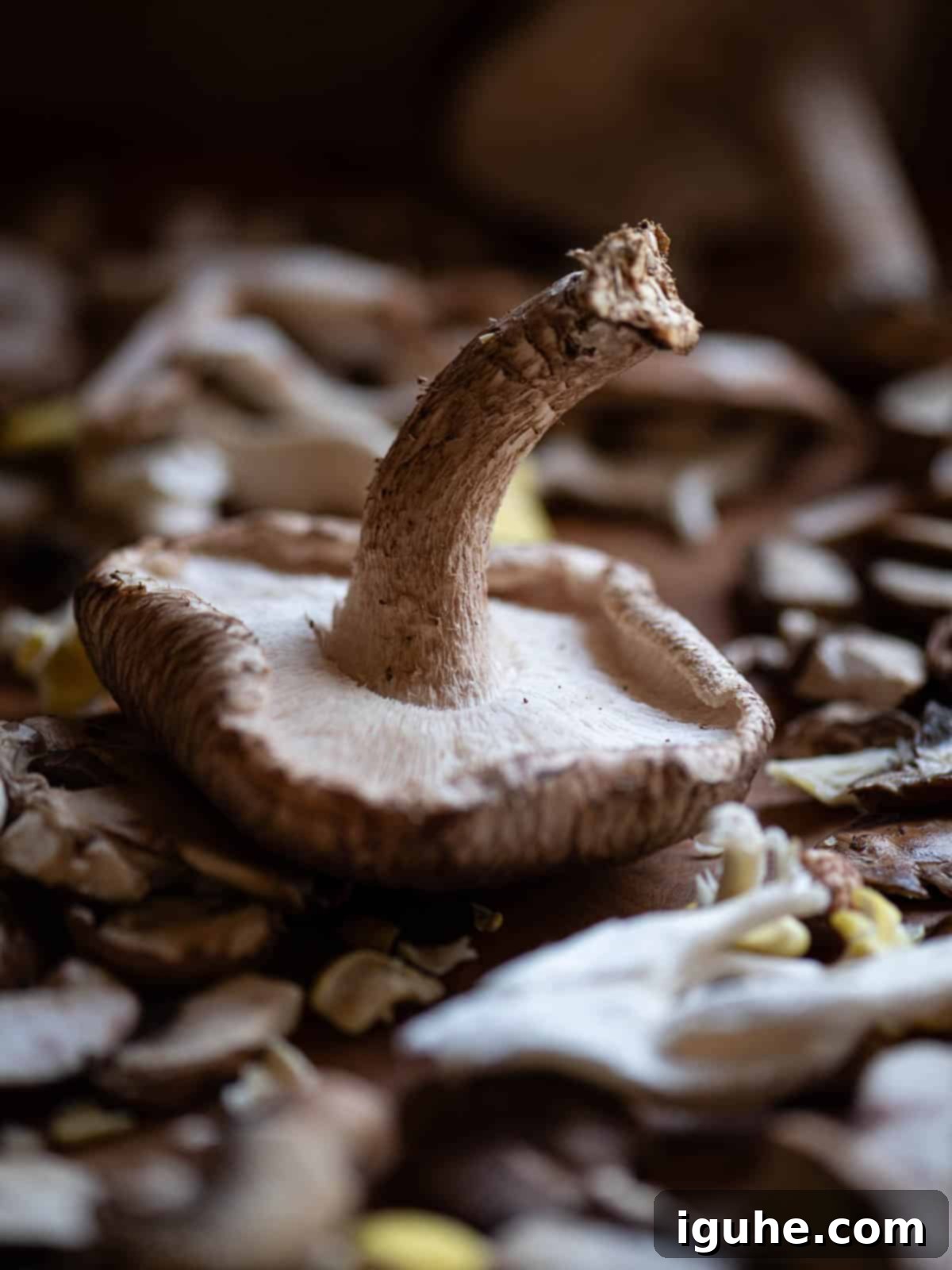
What is a Tartine? The Art of the Open-Faced Sandwich
A **tartine** is a quintessential French open-faced sandwich, distinguished by its single slice of artisan bread generously topped with a medley of flavorful ingredients. The name itself, derived from the French verb *tartiner*, meaning “to spread,” perfectly encapsulates the essence of this delightful dish. Unlike a traditional sandwich, a tartine celebrates its toppings, showcasing them beautifully on a canvas of bread.
Historically, tartines were a simple, practical way to enjoy fresh bread with whatever was available. Over time, they evolved into a versatile culinary art form, capable of being either rustic or incredibly sophisticated. Common toppings range from simple butter and jam to elaborate combinations of cheeses, cured meats, fresh or roasted vegetables, and seasonal fruits. This adaptability makes tartines a beloved choice for any meal, from a quick breakfast to a leisurely brunch or a light, elegant dinner.
Indeed, many gourmet toasts found across the culinary landscape are technically tartines. Whether you prefer the sweetness of a blueberry ricotta toast or the savory depth of a beet and dill creation, the tartine concept provides the perfect framework for creative and satisfying meals. Our Wild Mushroom Tartine exemplifies this tradition, transforming a basic slice of bread into an elevated dining experience.
Essential Ingredients for Your Gourmet Mushroom Toast
Creating this exquisite wild mushroom tartine requires only a handful of simple, high-quality ingredients that are generally easy to source. You won’t need any specialized equipment, just fresh produce and a good skillet. The magic lies in the combination and preparation of these core components.
- Wild Mushrooms: The Star of the Show
For the most profound flavor and varied textures, seek out a mix of different wild mushroom varieties. Some excellent choices include **Morels**, with their earthy, nutty flavor; **Chanterelles**, offering a peppery, fruity aroma; **Porcini**, known for their intensely savory and slightly meaty taste; **Lion’s Mane**, with its unique texture resembling crab meat; **Chicken of the Woods**, which lives up to its name with a subtle chicken-like flavor; and **Maitake** (Hen of the Woods), providing a rich, earthy, and umami-packed experience. Many grocery stores offer “gourmet” mushroom blends that often include a selection of these, sometimes alongside intensely flavored portobello mushrooms (while not technically wild, they contribute wonderfully to the overall umami). If wild varieties are unavailable, portobello mushrooms are your best substitute for their robust flavor; avoid bland white button mushrooms, as they won’t deliver the desired depth. (A friendly note: I procure my wild mushrooms from trusted markets. If you’re an experienced forager, please enjoy the fruits of your labor responsibly!) - Unsalted Butter: For Richness and Sautéing
Butter is crucial here for its ability to beautifully sauté the mushrooms, promoting caramelization and adding a rich, nutty depth to their flavor. While olive oil can be used as an alternative, butter truly enhances the overall luxuriousness of the dish. - Dijon Mustard: A Tangy Kick
A teaspoon of good quality Dijon mustard introduces a delightful tang and subtle complexity, cutting through the richness of the butter and mushrooms and adding an essential layer of flavor that brightens the entire tartine. - Worcestershire Sauce: The Umami Enhancer
This savory condiment is a secret weapon for deepening the umami profile of the mushrooms. Just a small amount adds a rich, fermented note that complements the earthy flavors beautifully. - Sherry Vinegar: For Brightness and Deglazing
A splash of Sherry vinegar is used to deglaze the pan after sautéing, lifting all those delicious browned bits from the bottom and incorporating them into the mushroom mixture. Its bright, slightly nutty acidity provides a wonderful contrast, balancing the rich flavors. Champagne vinegar is an excellent alternative if Sherry vinegar isn’t on hand. - Fresh Herbs: Aromatic Perfection
When it comes to mushrooms, fresh thyme and rosemary are my top choices for their complementary earthy and woody notes. During recipe testing, I consistently gravitated towards thyme for its delicate aroma, but fresh rosemary would also be a fantastic addition, infusing the dish with its distinctive fragrance. - Crème fraîche: The Creamy Base
Crème fraîche, a thick and slightly tangy French cream, provides a rich, velvety base for the mushrooms. It’s similar to sour cream but has a higher fat content and a milder, less acidic flavor. Spread generously on the toasted bread, it adds a luxurious creaminess. Excellent substitutes include full-fat Greek yogurt for a tangier profile, labneh for a thicker, more concentrated creaminess, or smooth ricotta cheese for a lighter, milky texture. - Rye Bread: The Sturdy Foundation
While you could theoretically use any bread, I emphatically recommend a classic, sturdy rye bread, ideally with caraway seeds. The earthy flavor and the distinctive, slightly peppery taste of caraway in rye bread create an extraordinary pairing with the umami-rich mushrooms. The bread needs to be thick and robust enough to hold up to the generous topping without becoming soggy. Other excellent choices for a sturdy, flavorful base include artisan sourdough or a rustic ciabatta.
Step-by-Step Guide to Crafting Your Wild Mushroom Tartine
One of the best aspects of this mushroom tartine is how quickly it comes together. Mushrooms cook down rapidly, meaning you can have this gourmet toast ready in under 20 minutes. Full, detailed instructions are also available in the recipe card below.
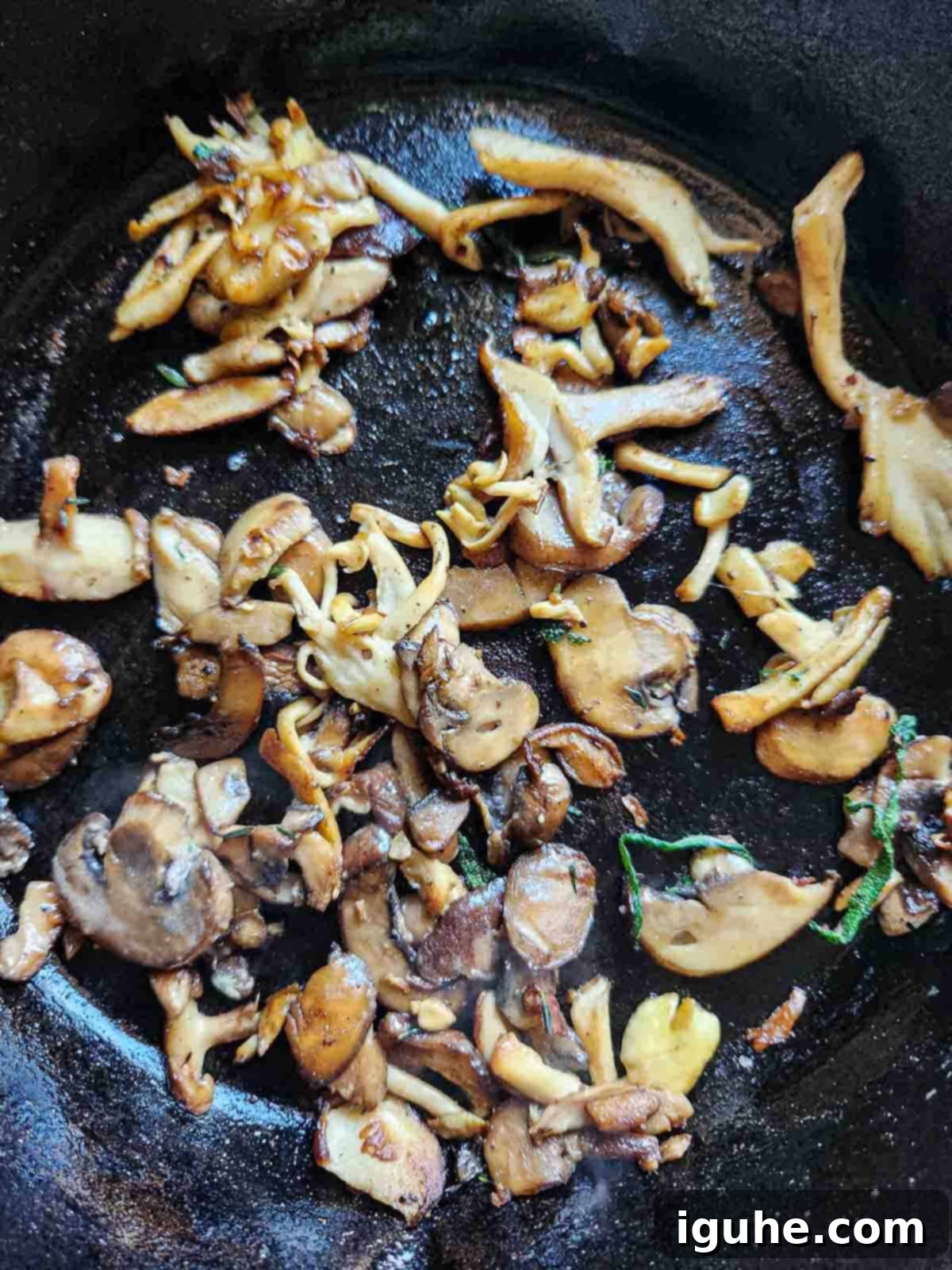
1. Sauté the Mushrooms: Begin by melting half of the unsalted butter in a large skillet over medium-high heat until it’s beautifully foamy. Add your prepared wild mushrooms, along with half of the kosher salt and fresh ground pepper. Sauté, stirring occasionally, for about 3-5 minutes. The goal is for the mushrooms to release their moisture and then start to brown and caramelize, developing deep flavor. Avoid overcrowding the pan; if necessary, cook in batches to ensure proper browning.
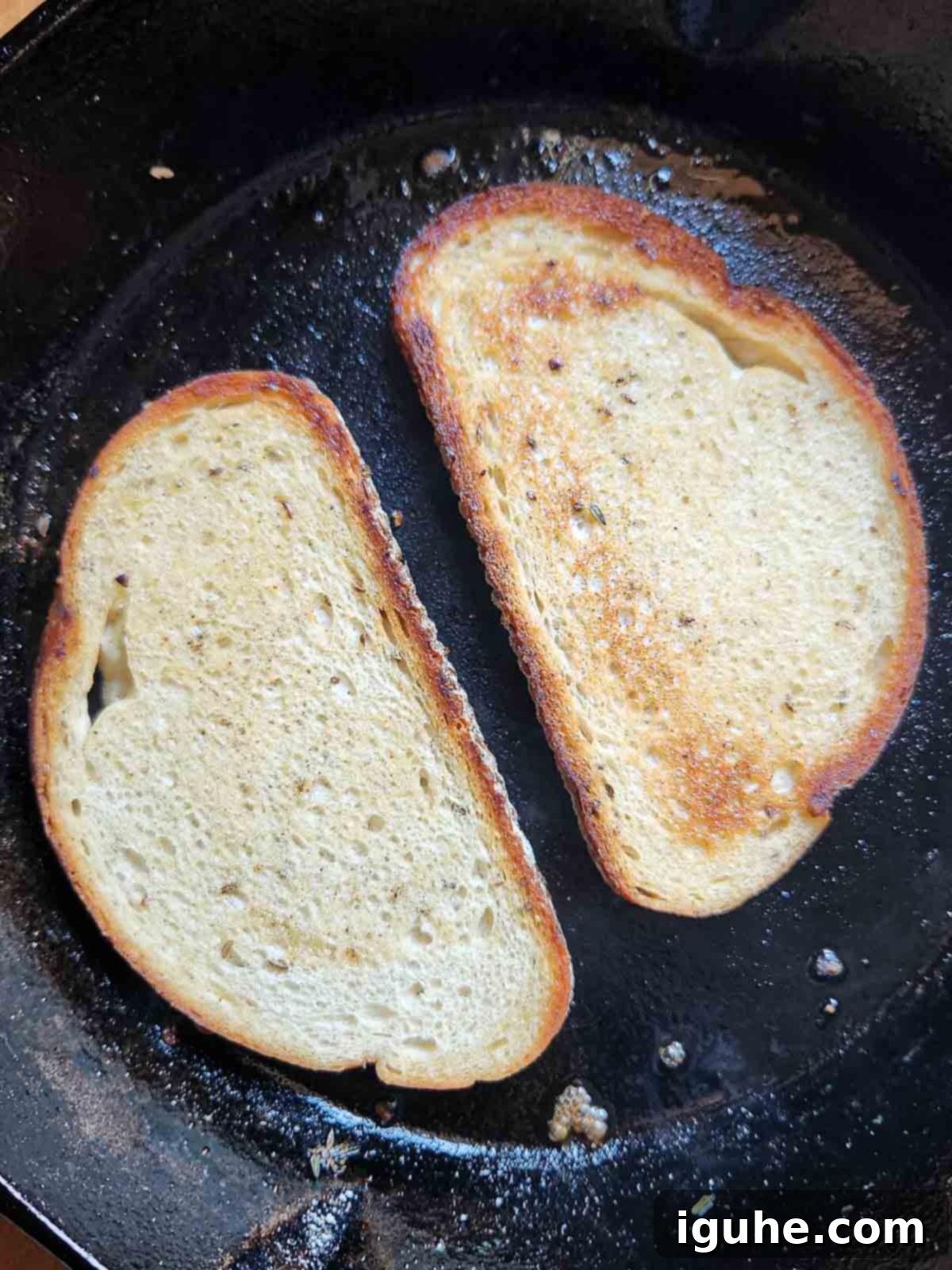
2. Flavor the Mushrooms: Once the mushrooms have achieved a lovely golden-brown hue, stir in the Dijon mustard, Worcestershire sauce, fresh thyme leaves, and the remaining salt and pepper. Continue to sauté for another minute, allowing the aromatics to become fragrant and the flavors to meld beautifully. Then, pour in a splash of Sherry or Champagne vinegar. Use a wooden spoon to scrape up any browned bits from the bottom of the pan – this is where all the concentrated flavor is! Cook until the vinegar has completely evaporated. Remove the flavorful mushroom mixture from the pan and set it aside while you prepare the bread.
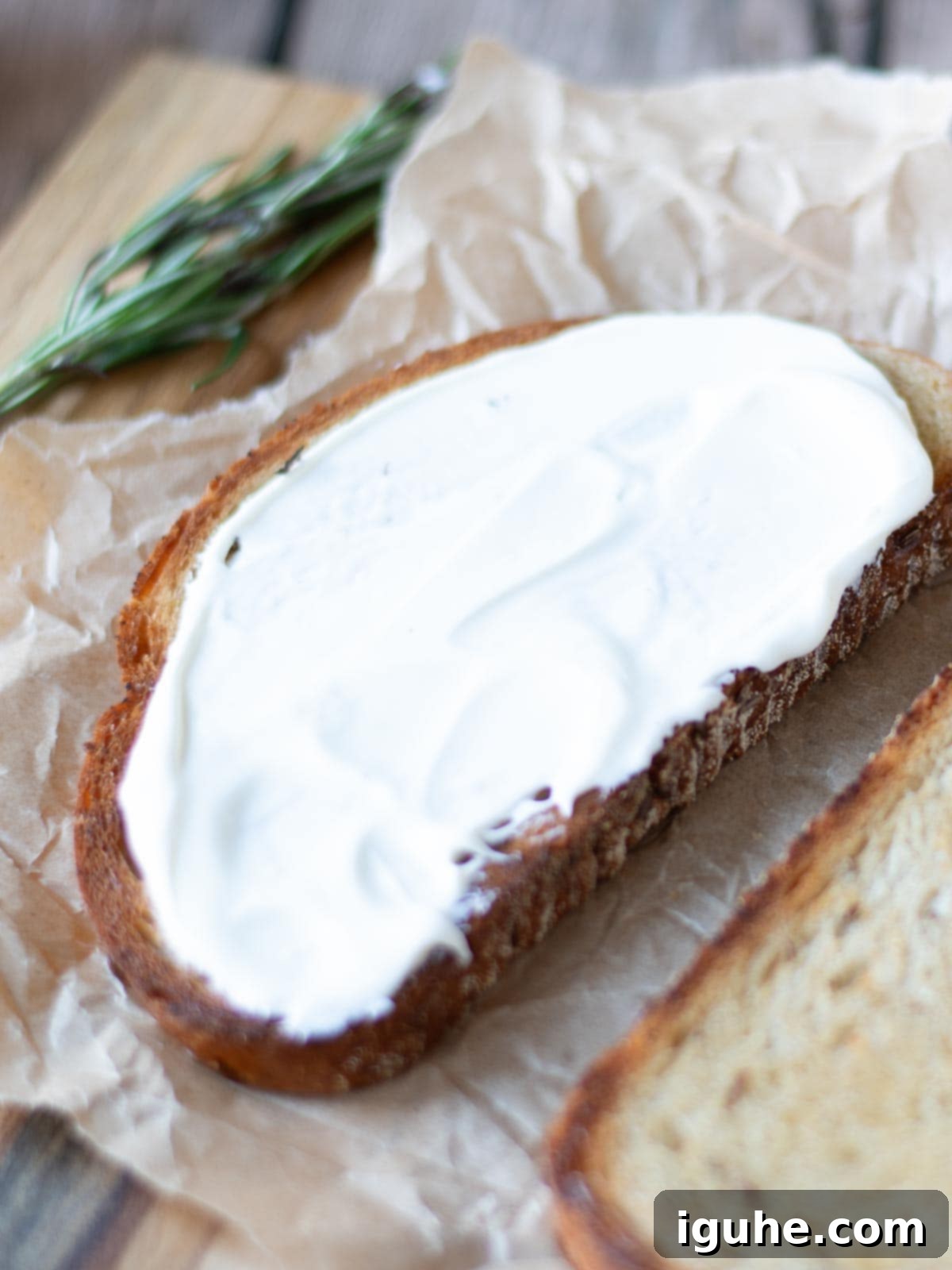
3. Toast the Bread: Using the same skillet (no need to clean it – those residual flavors are a bonus!), melt the remaining butter over medium heat until it foams. Place the slices of rye bread into the pan and toast them until they are golden brown and crisp on both sides, typically about 2 minutes per side. The goal is a sturdy, golden base that can support the toppings without becoming soggy.
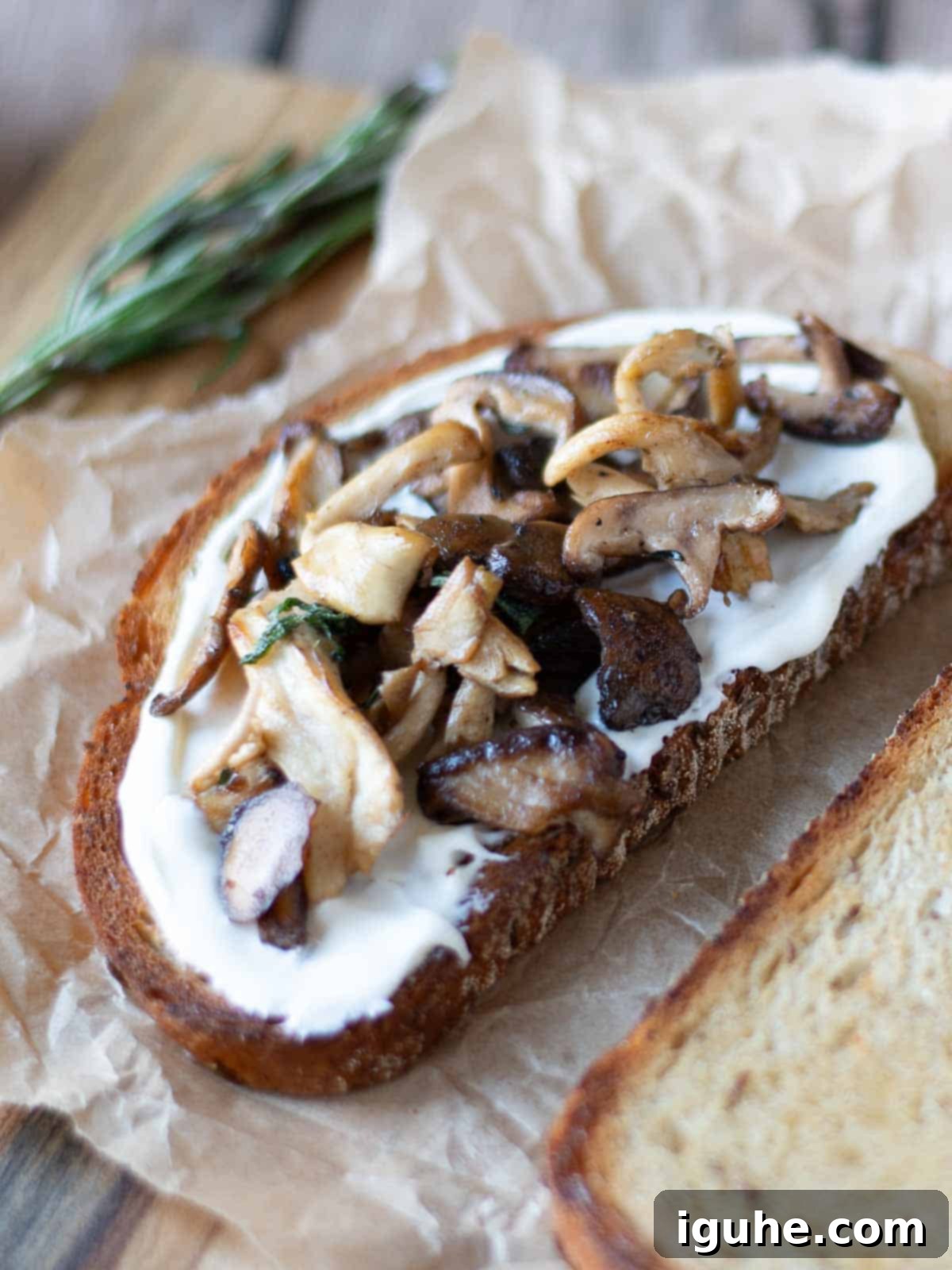
4. Assemble and Serve: Lay your perfectly toasted rye bread slices on serving plates. Generously spread the creamy crème fraîche evenly over each slice. Finally, pile a heaping amount of your delicious sautéed wild mushrooms on top of the crème fraîche. For an extra flourish and enhanced flavor, season with additional salt and pepper to taste, and perhaps a few fresh thyme sprigs. Serve your Wild Mushroom Tartines immediately to enjoy them at their best.
👩🍳 Expert Tips for Perfect Wild Mushroom Tartines
Achieving perfectly browned and flavorful mushrooms is key to this tartine. Here are some essential tips to master your sautéing technique:
- Don’t Crowd the Pan: This is arguably the most crucial tip for cooking mushrooms. When you overload the skillet, the mushrooms release too much moisture, steaming instead of browning. This prevents the Maillard reaction, which is responsible for developing those deep, umami-rich, caramelized flavors. Even if you’re making a small amount, cook them in batches if your pan isn’t large enough to accommodate them in a single layer.
- High Heat is Your Friend: Start with medium-high heat. The goal is to quickly evaporate moisture and allow the mushrooms to get a good sear. A heavy-bottomed skillet or cast-iron pan will help maintain consistent heat and promote even browning.
- Dry Mushrooms are Happy Mushrooms: Before cooking, ensure your mushrooms are as dry as possible. Excess moisture will steam them rather than brown them. Gently wipe them with a damp paper towel or a soft brush to remove dirt, rather than rinsing them, if possible. If you must rinse, dry them thoroughly immediately after.
- Season in Layers: Seasoning the mushrooms initially with salt helps draw out moisture, aiding in browning. Adding additional salt, pepper, and herbs later in the cooking process ensures a balanced flavor.
- Deglaze for Depth: Don’t skip the deglazing step with Sherry vinegar. Those browned bits stuck to the bottom of the pan (known as “fond”) are packed with flavor. The vinegar helps release them, incorporating them back into your mushroom mixture, adding incredible depth.
- Taste and Adjust: Always taste your mushroom mixture before assembly. Adjust salt, pepper, and even a tiny bit more vinegar if you feel it needs more brightness.
Mix It Up: Creative Variations for Your Mushroom Tartine
While the classic Wild Mushroom Tartine is perfection, don’t hesitate to customize it to your taste or what you have on hand. Here are some winning combinations and ideas to inspire your culinary creativity:
- Aromatic Additions: Elevate the sautéed mushrooms by adding minced garlic or finely diced shallots or onions to the pan after the mushrooms have started browning. Sauté until fragrant and caramelized for an extra layer of savory depth.
- Alternative Creamy Bases: Instead of crème fraîche, explore other delicious spreads. Try a creamy butter bean hummus for a Middle Eastern twist, or a vibrant roasted red pepper pesto for a punch of sweet and savory. Whipped goat cheese or even a herbed cream cheese can also provide a wonderful tangy contrast.
- Sneak in More Veggies: Boost the nutritional value and texture by incorporating other vegetables. Sautéed spinach or kale wilted into the mushrooms, fresh blanched peas, or thinly sliced roasted asparagus spears all pair wonderfully with the earthy mushrooms. Caramelized onions cooked until deeply golden and sweet also make a fantastic addition.
- Protein Power-Up: For a heartier meal, add some extra protein. Toss in a handful of drained and rinsed canned chickpeas or cannellini beans during the last few minutes of mushroom cooking. A perfectly fried or poached egg placed on top of the finished tartine is also a luxurious and satisfying option. Crispy bacon or pancetta bits sprinkled over can add a smoky, salty crunch.
- Cheesy Indulgence: A sprinkle of cheese can take your tartine to the next level. Grated Parmesan or Gruyère cheese melted slightly under a broiler or with the residual heat of the mushrooms adds a salty, nutty flavor. Crumbled feta, tangy goat cheese, or even a soft blue cheese can provide a delightful counterpoint to the earthy mushrooms.
- Garnish for Flair: Finish your tartine with a drizzle of high-quality truffle oil for an extra layer of mushroom aroma, a sprinkle of chili flakes for a subtle kick, or a balsamic glaze for a touch of sweet acidity.
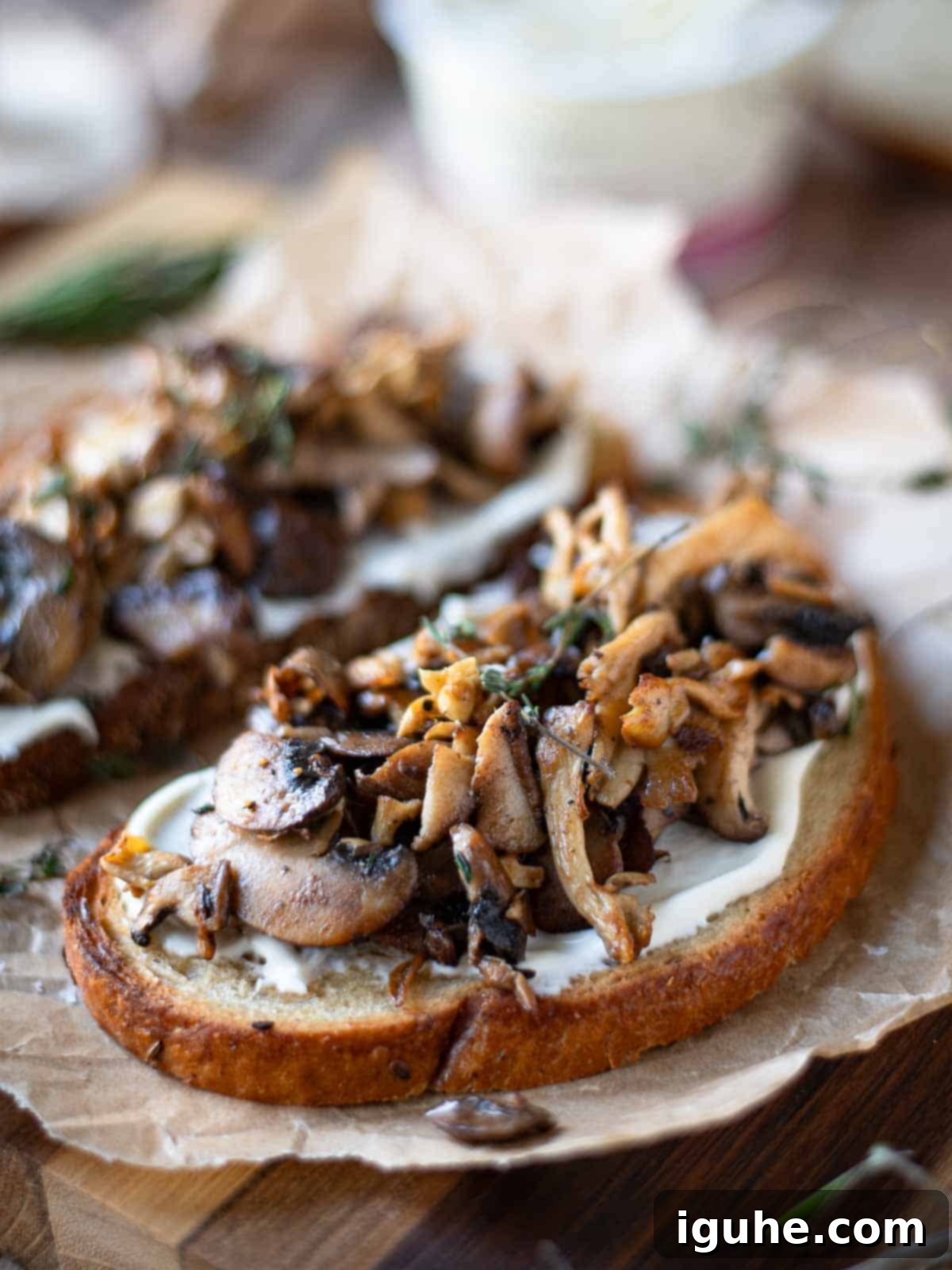
Serving Suggestions: When and How to Enjoy Your Tartine
This gourmet mushroom toast isn’t just confined to breakfast; its versatility makes it perfect for a variety of occasions. It’s a fantastic option for a leisurely brunch, a sophisticated light lunch, or even an elegant, easy dinner. Serve it as a stand-alone star, or pair it with complementary dishes to create a more substantial meal.
For a complete and balanced meal, consider serving your Wild Mushroom Tartine alongside a crisp, fresh heirloom tomato caprese salad or a simple green salad dressed with a light vinaigrette. The freshness and acidity of the salad will beautifully cut through the richness of the tartine. Alternatively, pair it with a creamy, warming roasted butternut squash soup with crispy sage or a classic creamy tomato soup for a comforting and satisfying combination. For a truly indulgent experience, a crisp glass of white wine, such as a Sauvignon Blanc or a light Pinot Grigio, would be a delightful pairing.
Storage Guidelines for Your Mushroom Tartine
For optimal taste and texture, this Wild Mushroom Tartine is truly best enjoyed immediately after assembly. The bread will be perfectly crisp, and the mushrooms warm and flavorful. However, if you have any leftover cooked mushrooms, they can be stored separately in an airtight container in the refrigerator for up to 5 days. This makes them an excellent candidate for meal prep! You can easily make a larger batch of the sautéed mushrooms at the beginning of the week and then assemble fresh tartines daily for quick and delicious breakfasts or lunches. To reheat the mushrooms, gently warm them in a skillet over medium heat until heated through, being careful not to overcook them, which could make them rubbery.
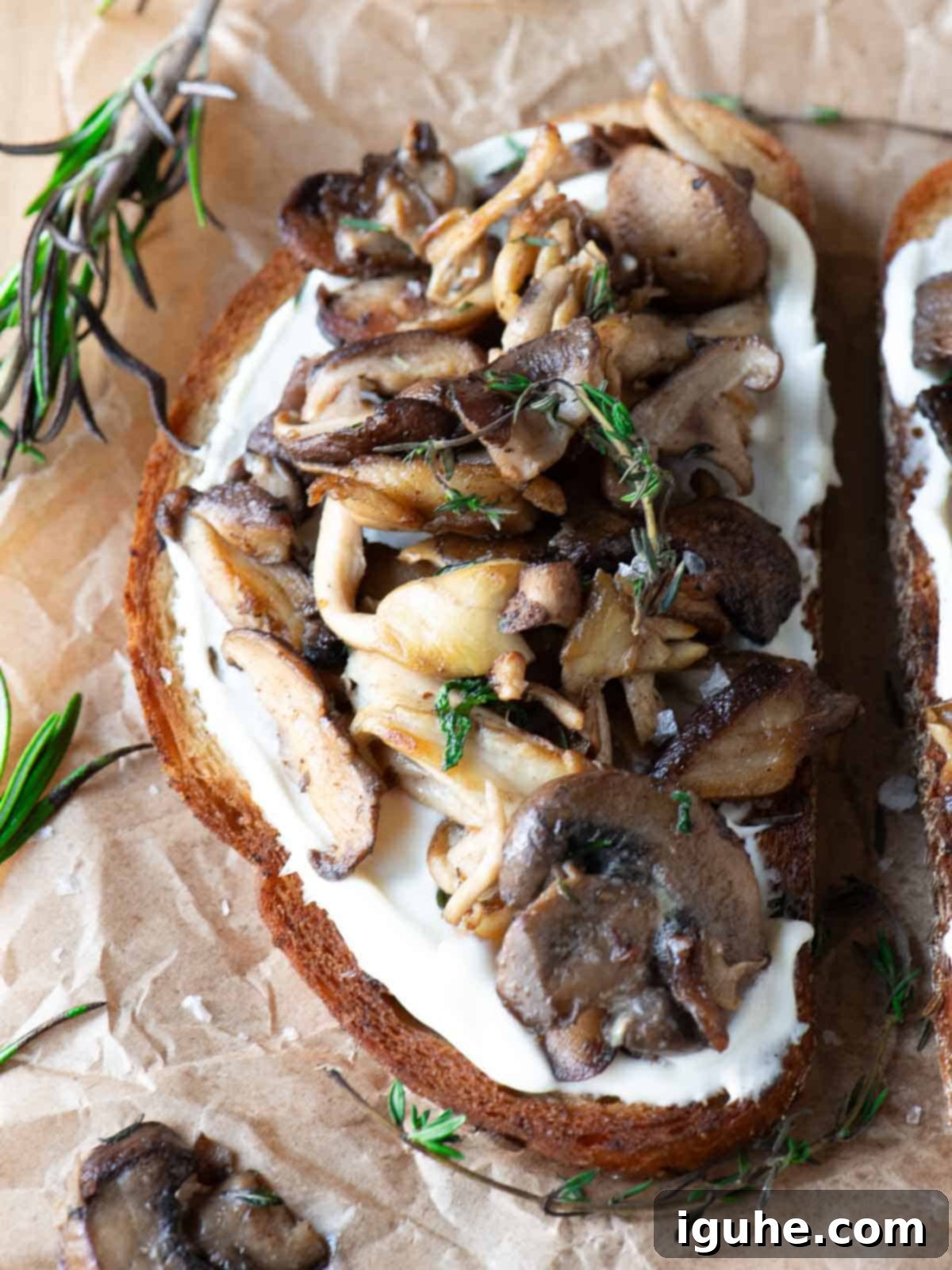
Frequently Asked Questions About Wild Mushroom Tartines
Mushrooms are like sponges and absorb water easily, which can lead to a less desirable texture when cooked. The best method is to use a damp paper towel or a soft brush (a pastry brush or a dedicated mushroom brush works great) to gently wipe away any dirt or debris. For more stubborn dirt, you can quickly rinse them under cold, running water, but ensure you immediately pat them thoroughly dry with a paper towel before cooking. The key is minimal water exposure and immediate drying.
To maximize their shelf life and prevent spoilage, store fresh mushrooms in a paper bag or wrapped in paper towels in the main compartment of your refrigerator. Avoid storing them in plastic bags, as plastic traps moisture, which accelerates their decay. Do not rinse or clean mushrooms until you are ready to use them. Stored correctly, most fresh mushrooms will last for 5-7 days.
Absolutely! Dried wild mushrooms can be a fantastic substitute, offering an even more concentrated umami flavor. To use them, rehydrate them by placing them in a bowl and covering them with hot water or vegetable broth for about 20-30 minutes, or until soft. Drain them, reserving the flavorful soaking liquid (which can be used in the recipe or in soups/sauces), and then pat them dry before proceeding with the sautéing steps as directed. Keep in mind that dried mushrooms tend to have a firmer texture than fresh ones.
Yes, with a few simple substitutions, you can easily adapt this recipe to be gluten-free or vegan. For a gluten-free version, simply choose a sturdy, artisan gluten-free bread that can hold up to the toppings. For a vegan tartine, replace the butter with olive oil or a plant-based butter alternative. The crème fraîche can be substituted with a plant-based sour cream, a vegan cream cheese, or a cashew-based cream for similar richness and tang. Ensure your Worcestershire sauce is also vegan, as some brands contain anchovies.
Discover More Savory Dishes
If you loved the rich flavors of this Wild Mushroom Tartine, explore other delightful savory creations on our site. There are so many unique flavor combinations waiting for you!
- Sun Dried Tomato and Feta Fried Eggs
- Halloumi Sandwich with Red Pepper Aioli
- Heirloom Tomato Caprese Salad
- Roasted Red Pepper Pesto
Did you make this delightful Wild Mushroom Tartine? We’d absolutely love to hear about your experience! Please take a moment to leave a ⭐⭐⭐⭐⭐ rating and a comment right below the recipe card. And if you capture a beautiful photo of your creation, don’t forget to share it on Instagram and tag us @brunchandbatter. Your feedback and photos truly inspire us!
📖Recipe
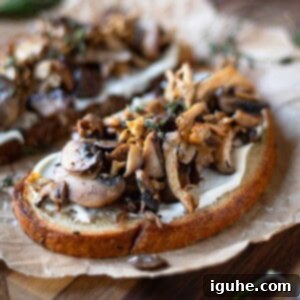
Wild Mushroom Tartine
Pin Recipe
Equipment
-
non-stick skillet or cast iron pan
Ingredients
- 4 tablespoon unsalted butter, divided
- 4 ounces wild mushrooms see notes
- ½ teaspoon Kosher or fine sea salt, divided
- ¼ teaspoon fresh ground pepper, divided
- 1 teaspoon Dijon mustard
- 1 teaspoon Worcestershire sauce
- 4 sprigs fresh thyme leaves
- splash Sherry or Champagne vinegar
- ¼ cup crème fraîche
- 2 slices rye bread
Instructions
-
In a large skillet over medium-high heat, melt the butter until foamy. Add the mushrooms and half the salt and pepper, and saute until the mushrooms start to brown, about 3-5 minutes.4 tablespoon unsalted butter, divided, 4 ounces wild mushrooms, ½ teaspoon Kosher or fine sea salt, divided, ¼ teaspoon fresh ground pepper, divided
-
When the mushrooms start to brown, add the Dijon, Worcestershire sauce, thyme, and the remaining salt and pepper. Saute for about 1 minute until the flavors come together. Add the vinegar, scraping down any browned bits until the vinegar evaporates. Remove from the heat and set aside while you toast the bread.1 teaspoon Dijon mustard, 1 teaspoon Worcestershire sauce, 4 sprigs fresh thyme leaves, splash Sherry or Champagne vinegar
-
In the same skillet you cooked the mushrooms in, melt the remaining butter over medium heat. When the butter foams, add the bread slices and cook until golden brown. Flip and repeat on the other side, about 2 minutes.2 slices rye bread
-
Assemble the toast: Lay out the bread. Divide and spread the crème fraîche over the toast, followed by the mushrooms. Season to taste with additional salt, pepper, or thyme. Serve immediately.¼ cup crème fraîche
Notes
- Look for different kinds of mushrooms so that you have a variety of shapes, tastes, and textures. Some wild mushroom varieties include Morels, Chanterelles, Porcini, Lion’s Mane, Chicken of the Woods, and Maitake. My grocery store sells a “gourmet” mushroom package that has a mix of some of these, plus portobello (not technically wild, but they have so much flavor). If you can’t find wild mushrooms, I would stick with portobellos for the best flavor. Avoid bland-tasting white button mushrooms.
- When sauteeing your mushrooms, don’t crowd the pan. This will allow the mushrooms to brown. Even though I make a small amount at a time, I still cook them in batches to get a good sear. Using a heavy skillet or cast-iron pan will also help with browning.
- In place of the crème fraîche, you can use ricotta, labneh, Greek yogurt, or even your favorite hummus.
Nutrition*
*Nutrition information is provided as a courtesy and is an estimate only. Nutrition information can vary depending on many factors, such as products used, measurements and substitutions, therefore it is recommended that you obtain nutritional calculations based on your own finished recipe.
